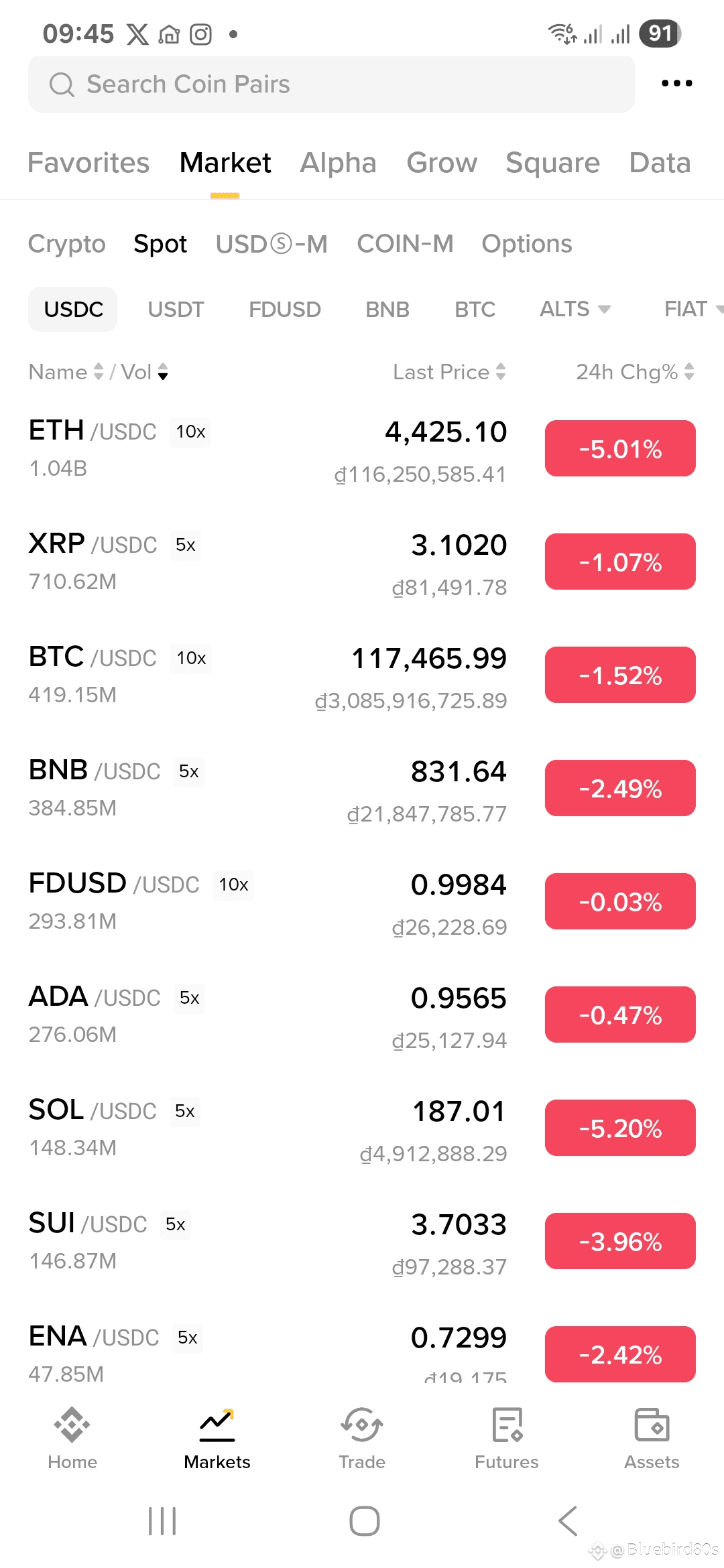Based on the image provided, it's clear the crypto market is experiencing a downturn today, with most major assets showing negative 24-hour change percentages.
When the market is "going down," experts and analysts typically look at a few key factors to understand the cause and potential outlook. Here's a summary of what experts generally say and the types of things they'd be looking at. I did some Research and I will share it with you.
1. Market Trends and Sentiment:
* Volatility is Normal: The crypto market is known for its high volatility. Price drops like the one shown are not uncommon and are often a natural part of its cycle.
* Bull vs. Bear Markets: Analysts often view price movements in the context of larger market cycles. They would assess whether this is a short-term pullback within a longer-term "bull market" (a period of rising prices) or if it's the beginning of a "bear market" (a period of sustained price decline).
* Sentiment Analysis: Experts analyze public mood and investor confidence. A widespread fear of a downturn can itself contribute to a sell-off, a phenomenon often described as "FUD" (Fear, Uncertainty, and Doubt).
2. Key Drivers and Triggers:
* Macroeconomic Factors: The crypto market doesn't exist in a vacuum. Analysts often link its performance to broader global economic events, such as interest rate changes, inflation data, or geopolitical events. When traditional markets are uncertain, crypto assets, which are often seen as "risk assets," can see a similar decline.
* Regulatory News: Major news regarding government regulations, such as new laws on stablecoins, ETF approvals, or crackdowns on exchanges, can have a significant and immediate impact on prices. Regulatory clarity is often seen as a positive, while new, restrictive regulations can trigger a sell-off.
* Project-Specific News: For individual coins like those in your screenshot (ETH, BTC, XRP), news related to their specific projects—such as a major software upgrade, a security vulnerability, or a new partnership—can cause a price change, which can sometimes affect the broader market.
* On-Chain Data: Sophisticated analysts use "on-chain" data to track what's happening on the blockchain itself. They look at metrics like the number of active wallets, transaction volume, or the flow of assets in and out of exchanges to get a deeper understanding of market activity and investor behavior.
3. Expert Opinions and Forecasts:
* Varying Predictions: You will always find a wide range of opinions. Some experts may see a downturn as a healthy correction, suggesting it's an opportunity for long-term investors to "buy the dip." Others may warn of further price declines and advise caution.
* Long-Term vs. Short-Term: Many analysts, particularly those who follow a "fundamental analysis" approach, emphasize the long-term potential of the technology and its adoption, arguing that short-term price fluctuations are less important. They focus on the underlying value of the projects, their use case, and their community.
In short, while the image shows a clear snapshot of a down market, experts would be diving into the "why" by examining a combination of market sentiment, macroeconomic events, and on-chain data to provide a more comprehensive analysis.



